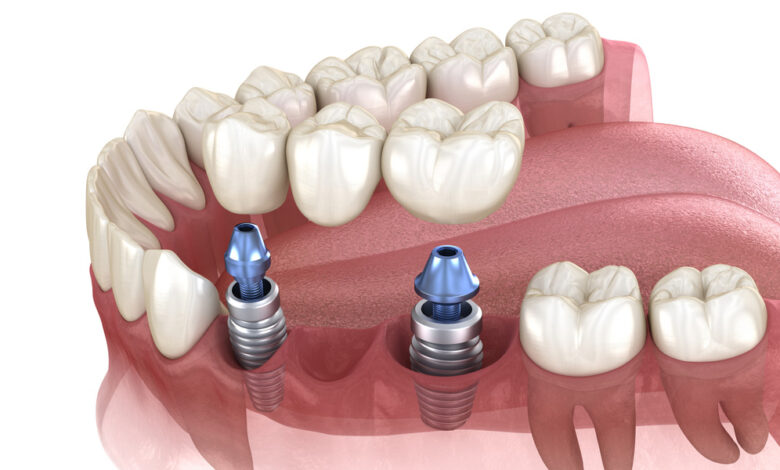Dental Bridges in Boynton

A dental bridge is an artificial deOne of the most common ways to do this is with dental bridges, which are designed for patients who have lost 2-3 teeth. They restore not just your mouth, but also they repair a portion of your smile. If you are thinking about getting dental implants in Boynton Beach and Dental Bridge, it is important to know exactly what this process entails and how the procedure works. All you need to know about dental bridges is explored in this blog post, so read through our guide and become knowledgeable enough to make a decision.
What Is a Dentalvice that takes the place of a missing tooth or teeth. This type of bridge consists of two or more crowns for the teeth on either side, called abutment teeth, and a pontic —a false tooth that replaces the missing tooth. Pontic can be made up of porcelain, gold, or alloys and the combination depends on patient need & preference.
Types of Dental Bridges
Dental bridges come in a variety of forms, each intended to address a particular set of requirements:
- Traditional Dental Bridge: Another type of dental bridge, this is the most common. But the process entails designing a crown of tooth or implant on both sides of the absent tooth with a pontic in the middle. These are generally made of Porcelain Fused to Metal or Ceramics.
- Cantilever: When there are neighboring teeth on just one side of the lost tooth or teeth, a cantilever bridge is utilized. This kind of bridge is less prevalent and is usually placed in less stressed portions of the mouth, such as the front teeth.
- Maryland Bonded Bridge (Resin-Bonded Bridge): This bridge has a metal or porcelain framework that is bonded on the back of adjacent teeth. This is a more conservative approach than the first as it results in less tooth removal on either side of the implant.
- Implant-Supported Bridge: This kind of bridge is supported by dental implants instead of natural teeth. It is considered to be more stable and therefore often appropriate in case of multiple missing teeth.
The Dental Bridge Procedure
The procedure of securing a dental bridge is usually made over multiple trips to your dentist and it takes several steps:
- Consultation and Examination: The dentist needs to examine your mouth, take X-rays, and talk about treatment options. They will decide if a dental bridge is suitable for you, and the type best suited for your problem.
- Preparation of Abutment Teeth: The last step in the dental implant procedure involves preparing your abutment teeth. This results in your dentist reshaping these teeth by grinding away some of the enamel to make room for that crown. In a case like an implant-supported bridal, dental implants would be surgically inserted into the jawbone, and time allowed for them to bond with associate degree bone.
- Impressions and Temporary Bridge: Your dentist will then make an impression on your teeth. These implants will be scanned to make your custom-finished bridge, pontic, and crowns. During the process of creating your permanent bridge, our Flint cosmetic dentist will fit you with a temporary bridge to help shield and protect your vulnerable teeth and gums.
- Permanent Bridge Placement: When your permanent bridge is ready, we will remove the temporary unit and then prepare the new bridge to fit in place. An implant-supported bridge — Here, the bridge will be connected to the implants.
A dental bridge is a great tooth replacement solution and provides functional aesthetics for long-term results. With knowledge of the types, procedures, and aftercare possible with a dental bridge might help you weigh your options as to whether these solutions can show long-term results.





